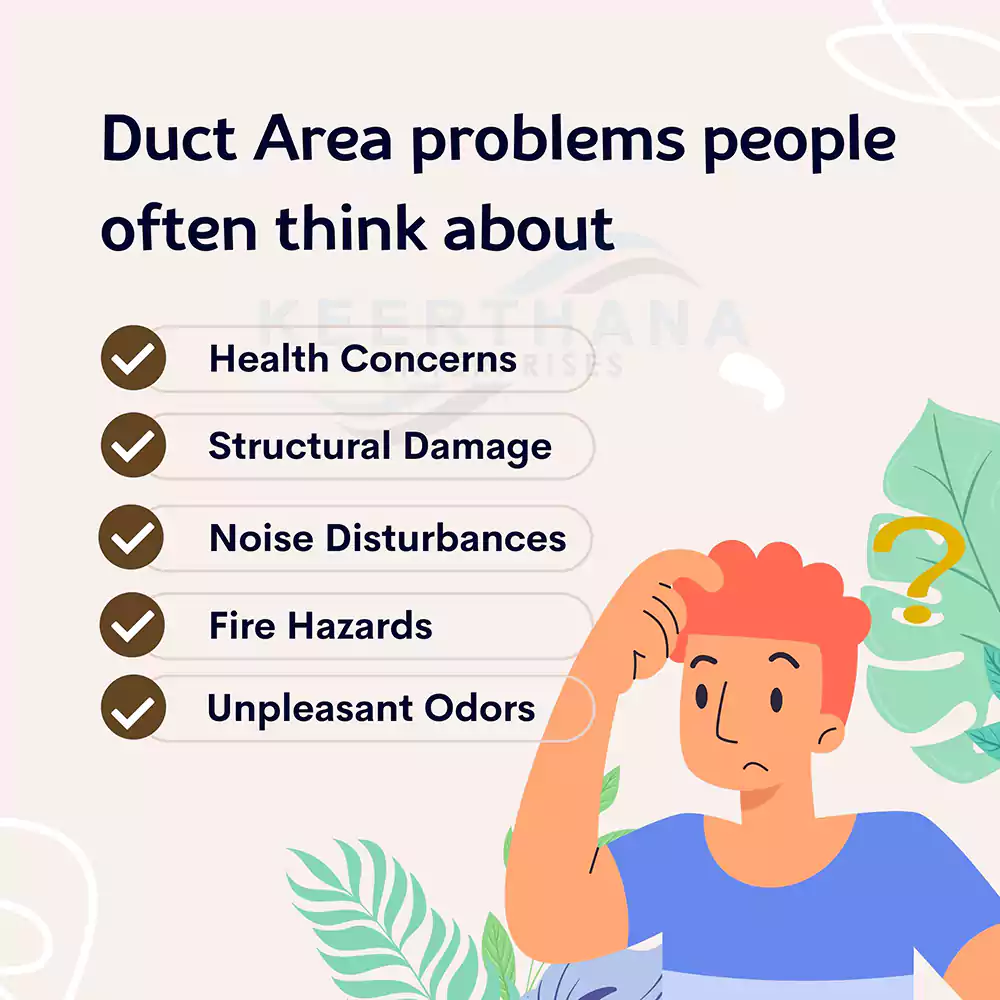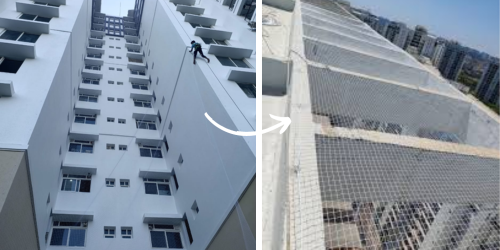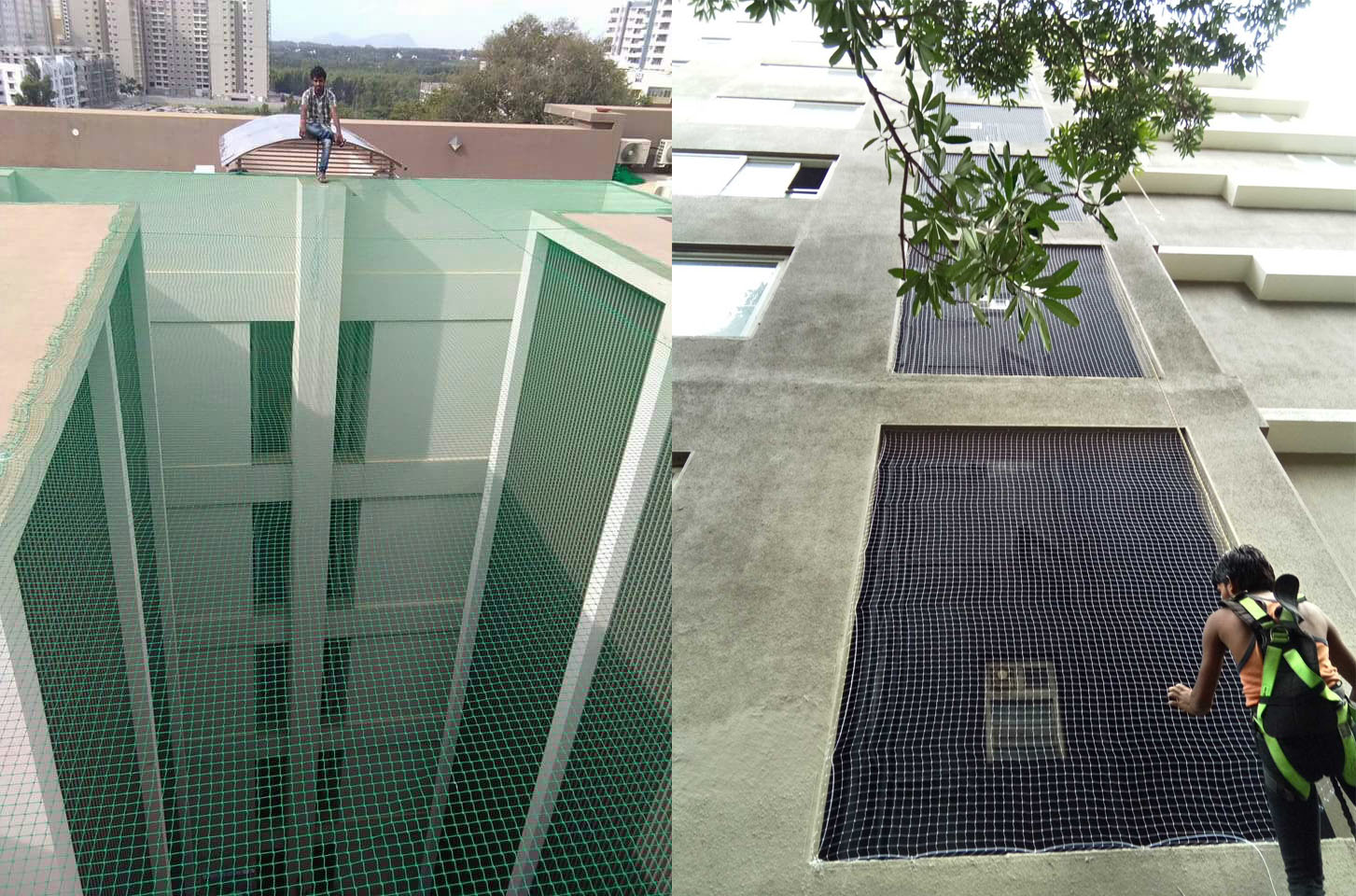Updated on Friday, January 20, 2024
What is Duct Area Safety Nets?
Are you concerned about the pigeon / bird issues in your duct areas? Pigeons and other birds can pose significant problems when they nest or roost in ventilation systems, leading to potential health and safety risks.
Our duct area safety nets provide a reliable and effective solution to these concerns. These nets are specifically designed to cover open duct areas, preventing pigeon and bird-related challenges in your building's duct areas.
The dimensions of our safety nets can be customized to fit the specific size of your duct area. Whether you have a small duct area or a large one, we have the right solution for you.
We specialize in providing high-quality duct area safety net installation services. Our safety nets are designed to prevent accidents and ensure the safety of residents and maintenance personnel.
Understanding the Problem
Pigeons and birds are attracted to duct areas for various reasons, including seeking shelter, nesting, or scavenging for food. Unfortunately, their presence in ventilation systems can lead to a range of issues, such as:
Health Concerns: Bird droppings can carry harmful pathogens and allergens, posing health risks to occupants of the building. Pigeon droppings can harbor harmful bacteria and fungi, leading to respiratory illnesses like histoplasmosis and cryptococcosis.
Structural Damage: Nests and debris built by birds can obstruct airflow, reducing the efficiency of ventilation systems and potentially causing damage.
Noise Disturbances: Bird activity in duct areas may generate noise disturbances, affecting the comfort of occupants.
Fire Hazards: Dry nesting materials and debris can become potential fire hazards if located near heat-producing elements in the ductwork.

Addressing the Issue
Professional Inspection: Schedule regular inspections by pigoen net installation professionals like us to identify and assess any existing bird-related issues in your duct areas.
Deterrents and Exclusion Methods: Implement bird deterrents and exclusion methods, such as bird spikes, netting, or repellents, to discourage birds from roosting or nesting in ventilation systems.
Cleaning and Sanitization: Clean and sanitize duct areas regularly to remove bird droppings, nests, and debris. This not only improves air quality but also eliminates potential health risks associated with bird-related contaminants.
Sealing Entry Points: Identify and seal any openings or gaps in the building's structure that may serve as entry points for birds. This helps prevent them from gaining access to duct areas.
Education and Awareness: Educate building occupants about the importance of not feeding birds near the premises and reporting any signs of bird activity in or around duct areas.
Features of Our Duct Area Nets
Physically block birds: The mesh size prevents pigeons from entering or exiting the duct area.
Discourage nesting: The open nature of the netting makes it unappealing for birds to build nests.
Robust Materials: Our nets are made from sturdy, UV-resistant materials that withstand various weather conditions and heavy use.
Customizable: Our nets can be customized to fit any duct area size and shape.
Visibility: Our safety nets are designed to be visible.
Easy Installation: Our experienced team will handle the entire installation process, ensuring the nets are securely in place.
Cost Effective - this is a cheaper method than any other Steel or Construction Models
Flexibility - You Can Remove at any time & refix it with minimal time & effort
Ventilation - The only Solution which Solves the Problem without Losing Ventilation at your Building either Residential or Commercial Place
Professional Installation

Keerthana's team of experts is dedicated to providing professional installation services. We will assess the duct area, discuss your requirements, and ensure the safety net is installed securely and effectively.
By proactively addressing and preventing pigeon and bird-related issues in your building's duct areas, you can create a healthier and more efficient indoor environment. Regular maintenance, professional inspections, and the implementation of deterrents are key components of a comprehensive strategy to mitigate the impact of birds on your building's ventilation systems. Prioritizing these measures will contribute to the well-being and comfort of occupants while ensuring the longevity of your building's infrastructure. Here is a general guide for professional installation:
Conduct a thorough inspection of the duct area to identify entry points and potential nesting sites. Determine the type and size of bird netting required based on the bird species and the size of the openings.
Acquire high-quality bird netting material that is suitable for the specific application. Ensure you have the necessary tools, such as scissors, cable ties, hardware.
Clear the duct area of any debris, nesting materials, or bird droppings before installing the netting.
Measure the dimensions of the openings where the bird netting will be installed. Cut the netting to the appropriate size, leaving extra material for securing and fastening.
Affix the netting over the openings using suitable mounting hardware. Ensure that the netting is taut and securely fastened to prevent birds from accessing the duct area. Use cable ties or other fasteners to secure the edges of the netting, ensuring a snug fit.
Inspect the surrounding areas for any gaps or openings where birds may still gain access. Seal any gaps or holes using appropriate materials, such as sealants or additional netting.
Get in Touch
If you have any questions or would like to learn more about our duct area safety net services, please feel free to contact us. We are here to assist you with all your safety net needs, helping you create a safe environment for residents and maintenance personnel alike.
Feel free to customize the content further to better reflect your company's unique offerings and services related to duct area safety nets.
Frequently Asked Questions (FAQs) - Pigeon and Bird Issues in Duct Areas
Why are pigeons and birds attracted to duct areas in buildings?
Pigeons and birds are attracted to duct areas for shelter, nesting, and scavenging for food. The warmth and hidden spaces of ducts provide an appealing environment for them.
What are the risks associated with pigeons and birds in ventilation systems?
Risks include health concerns from bird droppings, structural damage to ventilation systems, noise disturbances, and potential fire hazards due to nesting materials near heat-producing elements.
How can I identify if there are pigeon or bird issues in my building's ducts?
Look for signs such as bird droppings, nests, strange odors, or unusual noises in the duct areas. Regular professional inspections can also help identify and address these issues.
What measures can be taken to deter pigeons and birds from duct areas?
Implement deterrents like bird spikes, netting, or repellents. Additionally, sealing entry points, regular cleaning, and educating occupants about not feeding birds near the building can be effective.
